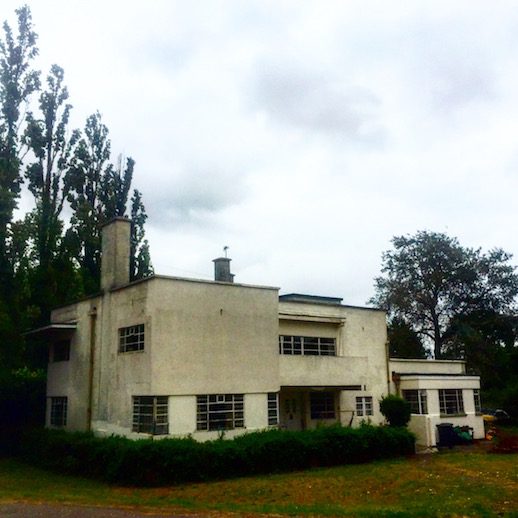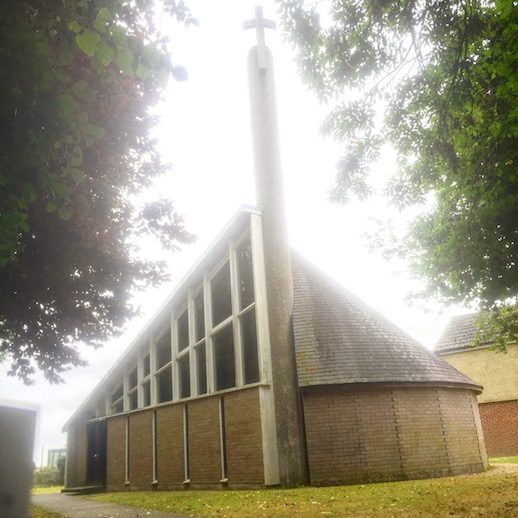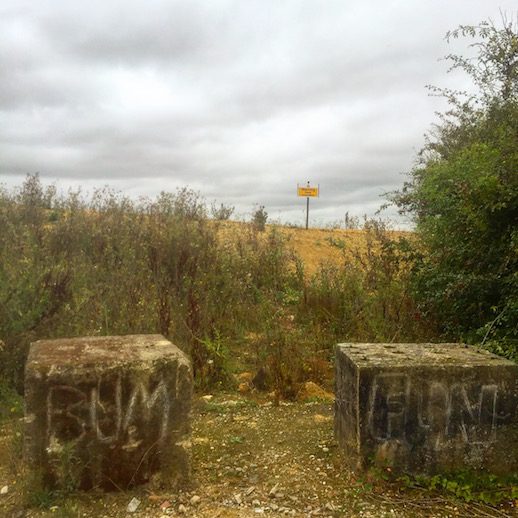As part of Radical Essex‘s Architecture Weekend, Luke Turner visits Silver End, Francis Henry Critall’s 1920’s utopian new town:
Radical Essex is an ongoing programme run out of the Southend’s Focal Point Gallery, its mission in part intended to undo some of the contemporary myths and clichés of the county as the home of TOWIE, Basildon man, and the UKIP surge. Their recent Peculiar People exhibition celebrated the radicals who’ve made Essex home over the past 100 years or so, including Crass’ commune at Dial House, the Christian Othona community, various nudists, and the ‘Plotlanders’ – thousands of Londoners who escaped the slums of the East End for a new life in self-built houses in quiet rural backwaters. Yet here, a housing estate can be as radical as any commune, and Silver End is one such place. Francis Henry Critall was a manufacturer of steel-framed windows who built this new factory and idealised village of modernist houses for his workforce on Essex fields in the 1920s. All the needs of his workforce were catered for – there was a large department store, churches, houses assigned according to the ranks of staff designed by leading architects of the day, schools and the biggest village hall in England. This is the base for a Radical Essex weekend focussing on the architecture of the county, with bus tours around sites including the Bata shoe factory on the banks of the Thames estuary, and the seaside town of Frinton-On-Sea.
Silver End’s grand department store burned down in the 1950s, and photographs in the smart memorial garden devoted to Critall show its grand brick columns dissolving into flame. It’s now the site of a much smaller Co-Op, where one might head to find Anadin Extra for a hungover head and glistening slices of salt beef for lunch. In the post office at the back of the shop a woman asks “what’s all this Radical Essex thing?” The reply comes from the postmaster – “something to do with buildings”. The exchange immediately raises the question of who exactly this event is for. The locals, or a bunch of Londoners arriving by out-of-place bus to wander the streets snapping away for Instagram, like me?
The former town hotel is now a care home, and I peer in through one of Critall’s steel-framed windows to see pensioners’ lips mumbling through their lunch. On the edge of the village sits the farmhouse where the industrialist lived while his estate was built – also now a care home. There’s a certain sadness in this and the Pathé films of Silver End past being screened in the Scout hut, where smartly-dressed people of all ages are filmed about their business in this very new-looking town. The optimism that shaped the clean lines of the modernist architecture has been weathered by the years. Just around the corner from the village hall the site of the Critall factory is now largely cleared and derelict, surrounded by fences warning of guard dogs and prosecution. I wonder what people round here do these days. A sign outside one house on which Tania’s marker pen handwriting suggests that you might be interested in rescued cats and kittens. Boys in crash helmets zip around on off-road bikes. Men get in their cars to drive to the station for an afternoon train to the Olympic stadium to see West Ham lose 4-2 to Watford. A giant order of haddock and chips is placed at the Codfather chip shop, which has a top-end Bentley parked outside. People around here get on with what they do.
They’re also part of the wider landscape. This is no museum village or precious island for modernist buffs. The village hall had its towers removed during WWII thanks to the presence of aircraft flying in to land at RAF Rivenhall, a bomber base just a few lanes away. In the afternoon my friend and I discover it on a driving adventure, turning left and right at random. On the edge of the old airfield perimeter is the isolated 900-year old church of Holy Trinity Bradwell, where an enthusiastic lady guides us around the fading Medieval paintings and monuments falling off the wall, the marble carvings of long-forgotten nobility kneeling in prayer but missing their hands. She hopes she might have time to trace their American descendants to request donations for their repair. There’s just one hangar left at the old airfield, long and squat and black behind the overgrown remains of the taxiways. The runways have long disappeared due to quarrying for aggregates that has lowered the entire landscape by several metres. The flat ground is soft khaki brown sand scattered with rough vegetation, suddenly giving way to steep slopes that crumble into vast craters with young lakes at the bottom. A pair of buzzards mew around the rim. Someone has sprayed the words BUM and FUN on two old concrete roadblocks. It felt like a different world from the straight lines and careful planning of Silver End just a few hundred yards away.
On guided tours of the village some can be overheard tutting over the upkeep of the houses, the presence of gnomes, trampolines or mock wells in front gardens, or that architectural elements have been painted improper shades. There’s of course a danger that the fetishist of the modern past is a reactionary, stuck in a fusty and twee hankering after a golden age. It’s to the credit of Radical Essex that they’ve largely avoided this in their programming. Jonathan Meades, who appears in an excellent Q&A via satellite link from his home in Le Courbusier’s Cité Radieuse in Marseille, would of course have no truck with these types – he enthusiastically advocates new residential developments made of shipping containers. The Radical Essex architecture weekend is about far more than buildings, for they’re merely the vessels into which all human life is poured. They’re a basic need, sure, and their good (or otherwise) design will always have a profound impact on those who live within them. Stubborn individualism is arguably the hallmark of the Essex character, and in recent years it might well have caused the rightward drift that made the county enthusiastic voters for Brexit. Yet the joy of Silver End, the plotlanders and the idealist communities who have made Essex their home, is in how these same qualities once meant an avoidance of conformity and belief that utopia might be possible in the flat lands to the east of London. Ken Worpole, an expert on plotlands, used a Q&A during the afternoon to suggest that land collectives and a return to temporary living structures and utopian ways of life might be a solution to some of our modern problems; that Essex could be “an experimental laboratory for solving the housing crisis”.
At the end of the day, a Depeche Mode tribute band called Speak & Spell appear on the Village Hall’s stage. Fronted by a ‘Dave Gahan’ who’s mastered all the right notes and knows just when to whoop “yeah” in ‘Never Let Me Down Again’ they’re mostly convincing and entirely fun, rattling away through versions of the last 30 years of the Basildon boys’ strange, dark pop songs. ‘Dave Gahan’ takes selfies with audience members, one of whom spills his two rider cans of Fosters lager, which fizz and froth over the front of the stage. With a crowd largely made up of locals from kids to middle age, it’s gloriously inauthentic, a corruption of what was once modern and a celebration of the now. To the people who live in Silver End this isn’t a radical place at all, it’s just home. But perhaps that’s the most radical thing of all – the surprising delight in unexpected places, the oddities that lurk behind the folds of every map.


